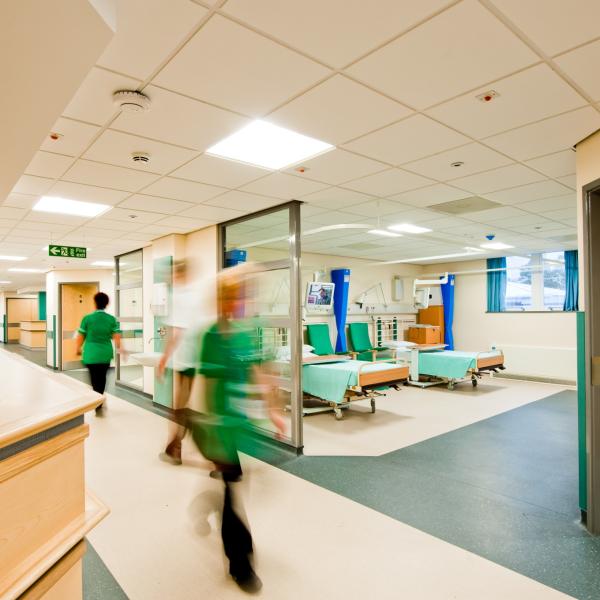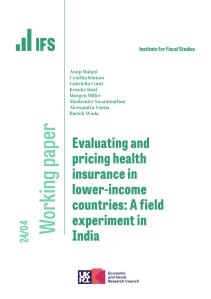Recent announcements of additional funding for frontline NHS services in England up to 2023–24 came as a welcome relief for many within the health service and will help to maintain the quality of services for patients. However, given the government’s commitments to eliminate the deficit by the mid 2020s, increasing NHS spending will require some combination of reductions in spending elsewhere or significant tax rises. Given the scale of recent cuts to other areas of public spending, further cuts look very hard to achieve. The burden is therefore likely to fall on taxes, a point recently acknowledged by the government.
This is the headline finding from a new analysis by the Institute for Fiscal Studies, The Health Foundation, The King’s Fund and the Nuffield Trust. The briefing, ‘Does the NHS need more money and how could we pay for it?’, sets out how NHS spending has evolved over time and the pressures that it now faces, what the new funding announcements mean for spending going forward, and how the government could fund this
spending.
Day-to-day NHS spending in England will be around £20 billion higher in 2023–24 than it is in 2018–19. This is an average annual increase of 3.4% over a five year period. However, the exact impact on the wider Department of Health budget is still uncertain, with no details yet available for how spending on capital, much of public health and staff training will change over the same period. If these are frozen in real terms the overall health budget would rise by 3% a year over the period, as opposed to 3.4% a year for the NHS specifically. Regardless, this figure remains below the 4% increases widely regarded as the minimum necessary for the health service to maintain standards and improve services over the next 5 years.
Over long periods growth in health spending has outpaced growth in most other areas of public spending, and the protection of health budgets since 2009–10 has in part been possible because other spending areas have been squeezed. At around £150 billion, health is already the single biggest element of government spending after social security spending. Taking all spending, 20p in every pound spent by the government goes on health. Looking at spending on public services 30p in each pound of spending goes on health.
Even in the last eight years, while spending on the NHS has grown slowly, growth in the share of service spending going on health has continued at a record pace as a result of large cuts to other departmental spending. Further cuts to these areas would increase the growing pressure on other public services after almost a decade of austerity.
The alternative to continued cuts in other public spending is to raise taxes. While the share of national income raised in tax is high by UK historical standards, it is still low by European standards.
Tax rises are rarely popular, but there is growing evidence of public willingness to fund the NHS. New polling, commissioned by the Health Foundation and carried out by Ipsos MORI, shows that 79% of the UK adults aged 15+ think that the NHS is underfunded and a majority of people believe that any additional NHS funding should be raised through taxes. However, there is no clear consensus on which taxes should be raised, by how much, or who should pay the additional taxes.
If the government is really going to fund most of the spending increase from higher taxes, it will need to be bold. You can’t raise £20 billion easily. It will be hard to avoid using one of the big three taxes – income tax, VAT or NI.
Paul Johnson, Institute for Fiscal Studies (IFS) Director, said:
“The NHS is 70 this year. As we have put more demands on it we have spent more and more on it. In real terms we spend twice what we did just 20 years ago. As a fraction of national income the amount we devote to it has more than doubled since it was founded in 1948. Over a long period this has been achieved without raising taxes as a fraction of national income since a smaller share of national income has been spent in other areas. That no longer looks possible, leaving higher taxes the most likely option”.









